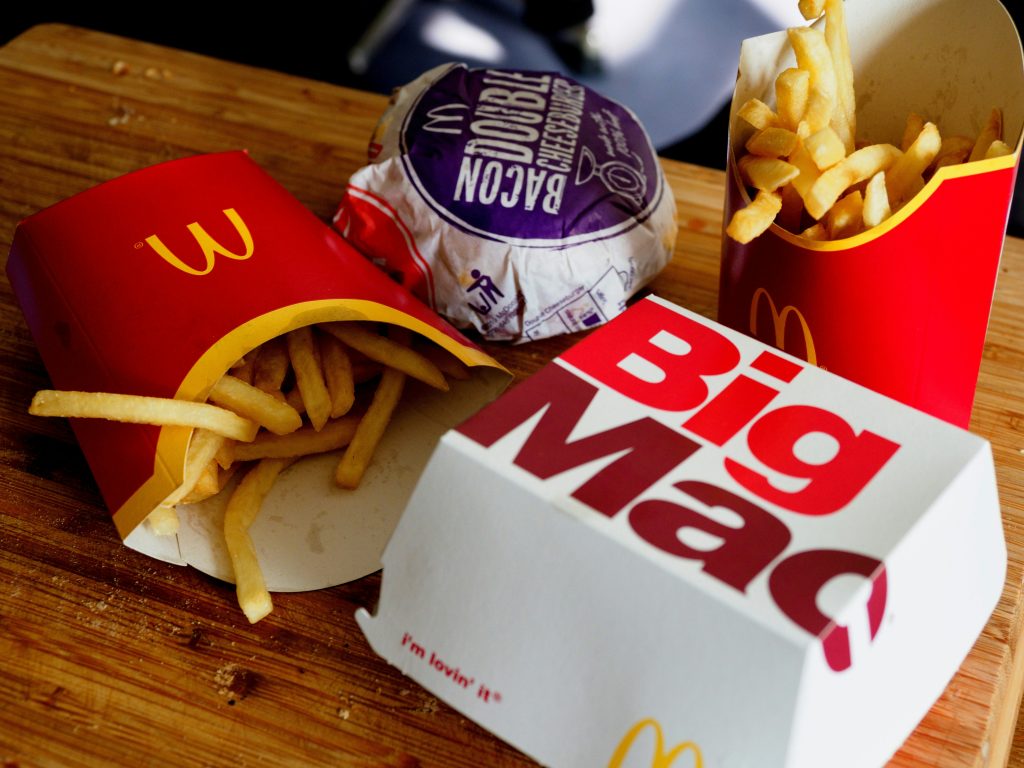Fast food has always been a symbol of American culture—quick, affordable, and comforting. But if you’ve found yourself shocked at the cost of your last combo meal, you’re not alone.
Over the decades, inflation has quietly but steadily transformed fast food from a pocket-change indulgence to a significant part of your dining-out budget. To truly grasp just how much things have changed, let’s take a nostalgic journey through the golden arches (and beyond) and see what some of the most iconic fast food meals used to cost the year you were born—and how they stack up today.
McDonald’s: From 15-Cent Hamburgers to $10 Combos

When McDonald’s first opened its doors in the 1950s, a hamburger cost just 15 cents, a cheeseburger was 19 cents, and a milkshake would set you back 20 cents. Even into the 1970s, you could still walk away with a full meal—burger, fries, and drink—for under a dollar.
Fast forward to today: a Big Mac alone costs around $5.99 depending on your location. A full meal easily creeps over $10. McDonald’s has introduced value menus to soften the blow, but there’s no denying that what once cost mere coins now requires a hefty bill (or a Venmo transfer).
Fun Fact: In 1955, $1 at McDonald’s could buy you six hamburgers. Today, it might cover part of your fries.
Burger King: A Whopper of a Price Hike
Introduced in 1957, the Whopper was priced at a modest 37 cents. It was a substantial burger, justifying its name and cost for the time. Through the ’70s and ’80s, it remained a budget-friendly option for families looking to “Have it Your Way.”
Today, a Whopper by itself often costs around $6 or more, and combo meals hover near $10 to $12. Burger King’s creative promotions and value deals try to keep the brand accessible, but inflation—and bigger portion sizes—have made Whopper runs a bigger splurge than ever.
Wendy’s: Old-Fashioned Goodness, Modern-Day Prices
When Dave Thomas founded Wendy’s in 1969, a hamburger cost around 35 cents, and a Frosty was about 25 cents. The focus was on quality: square patties, fresh (never frozen) beef, and friendly service.
Today, a Dave’s Single will cost you around $5.29, while a meal with fries and a drink can total up to $9 to $11. Even the beloved 4 for $4 meal deal has seen price adjustments in some locations. Though Wendy’s continues to market value and freshness, inflation has definitely crept onto their menu board.
In 1989, a Super Value Meal at Wendy’s was $2.99—the price of a single item now.
Taco Bell: From Nickel Tacos to Full-Sized Feasts
Taco Bell burst onto the scene in 1962, offering crunchy tacos for just 19 cents. It was a revolutionary concept: Mexican-inspired fast food at unbeatable prices. For decades, Taco Bell maintained its reputation as the go-to spot for affordable eats.
Today, although Taco Bell still offers value items (hello, $1 Cravings Menu), a Crunchwrap Supreme can cost $4 to $5, and a meal can easily pass $9. Limited-time specialty items, while exciting, come with a much heftier price tag than the OG days.
Still, when compared to other chains, Taco Bell remains one of the most inflation-resilient brands when it comes to getting a full meal without breaking the bank.
KFC: The Bucket That Broke the Bank

Colonel Sanders started selling his famous fried chicken during the Great Depression, offering a hearty meal when people needed affordable comfort most. By the 1960s, a bucket of chicken (14 pieces) cost about $3.50—enough to feed an entire family.
Today, a 12-piece meal at KFC (with sides and biscuits) can run upwards of $30 to $35. While quality and portion sizes have remained strong, KFC’s prices reflect broader changes in the cost of meat, production, and dining expectations.
Fun Fact: In 1970, you could get an entire “Sunday Dinner” for what now barely covers one side dish.
Dairy Queen: Sweet Memories at Sweeter Prices
For decades, Dairy Queen symbolized affordable summertime treats. In the 1950s, a soft-serve cone was a mere 5 to 10 cents, and sundaes rarely topped 20 cents. The 1980s saw the introduction of the Blizzard, which initially cost around $1.49.
Today, a medium Blizzard typically costs between $4 and $6, depending on add-ins. A basic cone is still relatively affordable, but those splurge-worthy sundaes and shakes have kept pace with rising costs elsewhere.
The Bigger Picture: Why Fast Food Isn’t “Cheap” Anymore
While it’s easy to blame inflation, other factors have contributed to rising fast food prices. Labor costs, real estate, supply chain issues, ingredient quality improvements, and even increased portion sizes have all driven up what you pay today.
Not to mention that today’s fast food often aims to balance value with fresher ingredients, healthier options, and new tech conveniences like app ordering and delivery—all at a cost.
The nostalgic days of grabbing a full meal for under a buck may be long gone, but fast food remains a quintessential (if slightly more expensive) part of American life. Each burger, taco, and milkshake carries with it not just flavors but decades of cultural and economic shifts.
Leave a comment